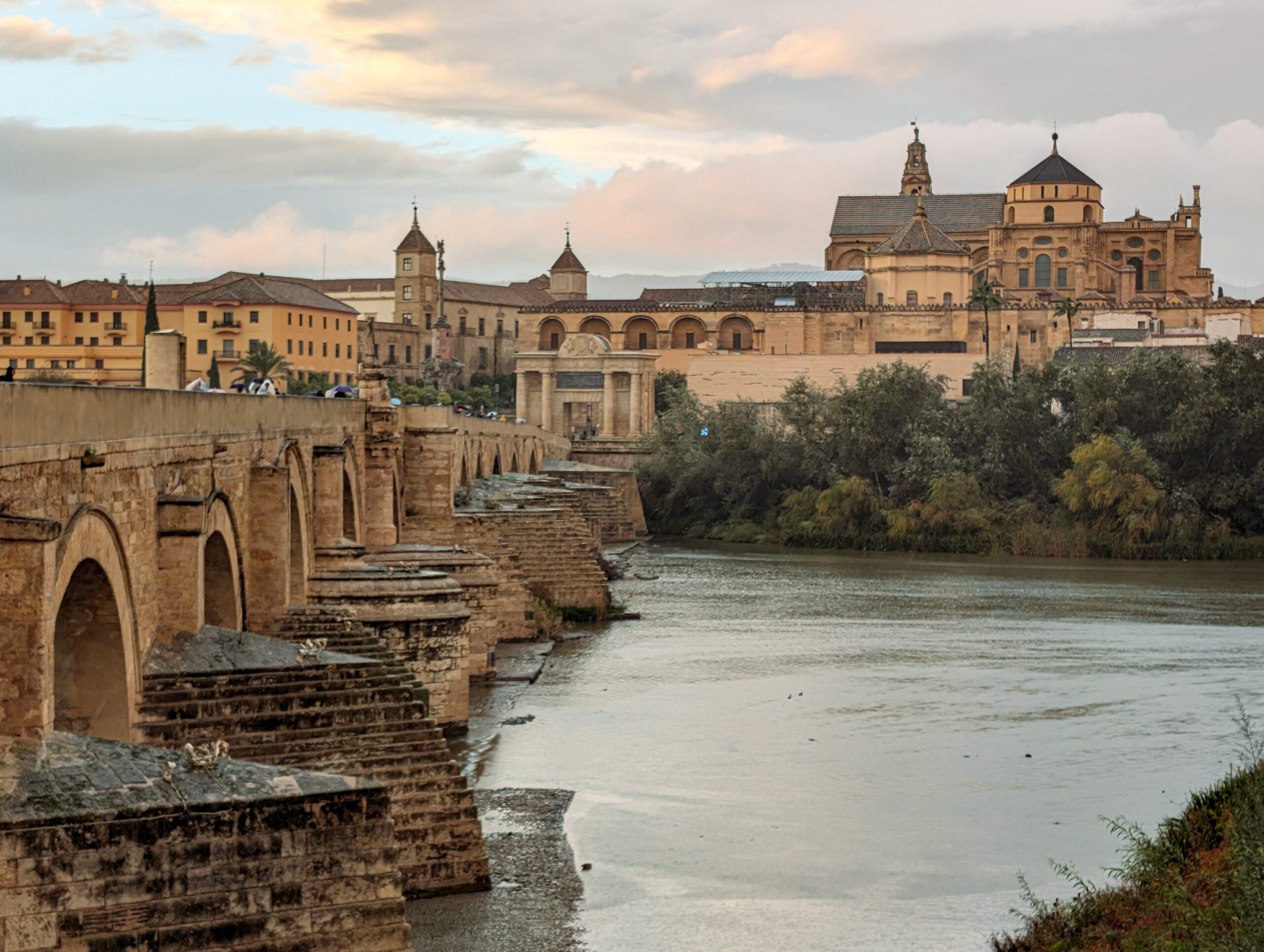Is Cordoba Worth Visiting? Best Things To Do & Reasons To Visit
Wondering if Cordoba is worth visiting on your trip in Southern Spain? Read on!
Cordoba, only an hour and 40 minutes down the road east from Seville, is a charming old city which you should definitely add to your Andalusia itinerary. It has seen influences of Romans, Visigoths, Islam, Christianity and Judaism through its thousands of years of existence.
The entire old town is a UNESCO World Heritage Site and is small enough for you to do as a day trip or spend up to 5 days exploring all the history around in more detail.
Quick Answer:
Yes, Cordoba is worth visiting! As a day trip from Seville or a short stop on a longer Andalusian itinerary. It’s less crowded than Granada and Seville but still packed with charm, history, and great food. For me, the city was an ancient reminder of how various influences shape our culture and history. If you’re into culture, architecture, or just wandering around beautiful streets, then read on to plan your visit to Cordoba.
How many days is enough for Cordoba?
Cordoba has a compact old town and can be visited in a day, walking around the old town and visiting the main attraction – the Great Mosque of Cordoba or the Mezquita-Catedral de Cordoba. While one day is enough to check out the main sites and walk around old town, you can spend 3 to 5 days here going deeper into the history, trying out local flavors and visiting cute villages around the city.
One Day In Cordoba
If you only have 1 day in Cordoba, here are the best things to do and highlights to check out.
Puente Romano de Cordoba or The Roman Bridge
The Roman bridge in Cordoba is the most recognizable landmark in the city. First built in the 1st century BC and rebuilt many times. Set across the Guadalquivir river that runs through Andalusia, it served as the only bridge in the city till the mid twentieth century. Take some time here to look at the old town from afar, thinking about all the history that the bridge has witnessed, especially at night when the old town and the bridge reflect in the river.
At one end of the bridge is the Torre de la Calahorra where for a €4.5 fee you can climb through a charming museum for views of the bridge. My favorite tower in the city though is further into old town by the Mezquita-Catedral de Cordoba.
You might recognize this bridge from Game of Thrones. If you’re a Game of Thrones fan and you’re looking for other cool cities in Spain worth visiting, check out Girona.

Mezquita-Catedral de Cordoba
The most impressive feature of Cordoba’s old town is the imposing Mosque-Cathedral Monument of Cordoba, the initial recipient of the UNESCO World Heritage Site tag in 1986, which was then expanded to the entire historic centre of Cordoba in 1994.
It was built as a mosque by the Moors in 786 AD and expanded by them until 1236, after which Spain was reconquered by the Spanish Christians. Over another 4 centuries, the site was modified to resemble both a mosque and cathedral that we see today. This site is a visual reminder of how interconnected our histories are. Spend some time with the audio guide taking in both the Islamic and Christian influences in its architecture. The arches and the lighting inside its main hall only add to the drama and weight of the history these walls hold within.
The visit costs €13 and €3 more for the Bell Tower or Torre Campanario which is my favorite view in the city. To avoid occasionally long queues, you can book your tickets online here or opt for a guided tour that informs you more deeply of the history of the place. That is one aspect that I found lacking in the audio guide and the information inside.
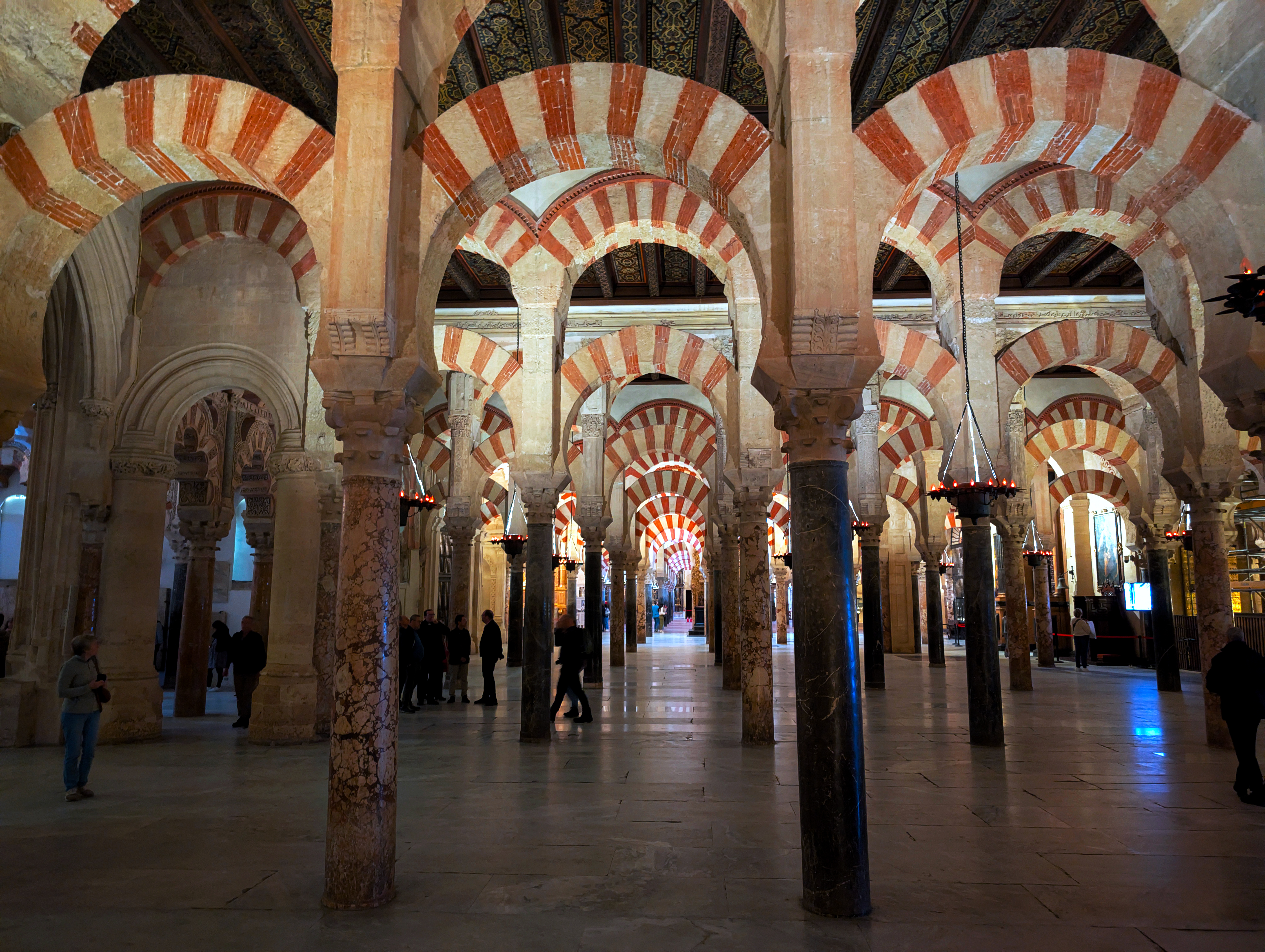
You can also opt for convenient day tours from Seville to Cordoba which include a visit to the Cathedral-Mosque monument.
Torre Campanario de la Mezquita-Catedral de Cordoba
The bell tower on the opposite end of the courtyard can be visited by tourists for a €3 fee, as a part of the Mosque/Cathedral visit or on its own. The tower offers exquisite views of the Roman bridge and the Cordoba old town.
Keep in mind that the tower allows visitors every 30 minutes. So, time your visit accordingly. Tickets can be bought at self serve kiosks, a ticket counter or online.
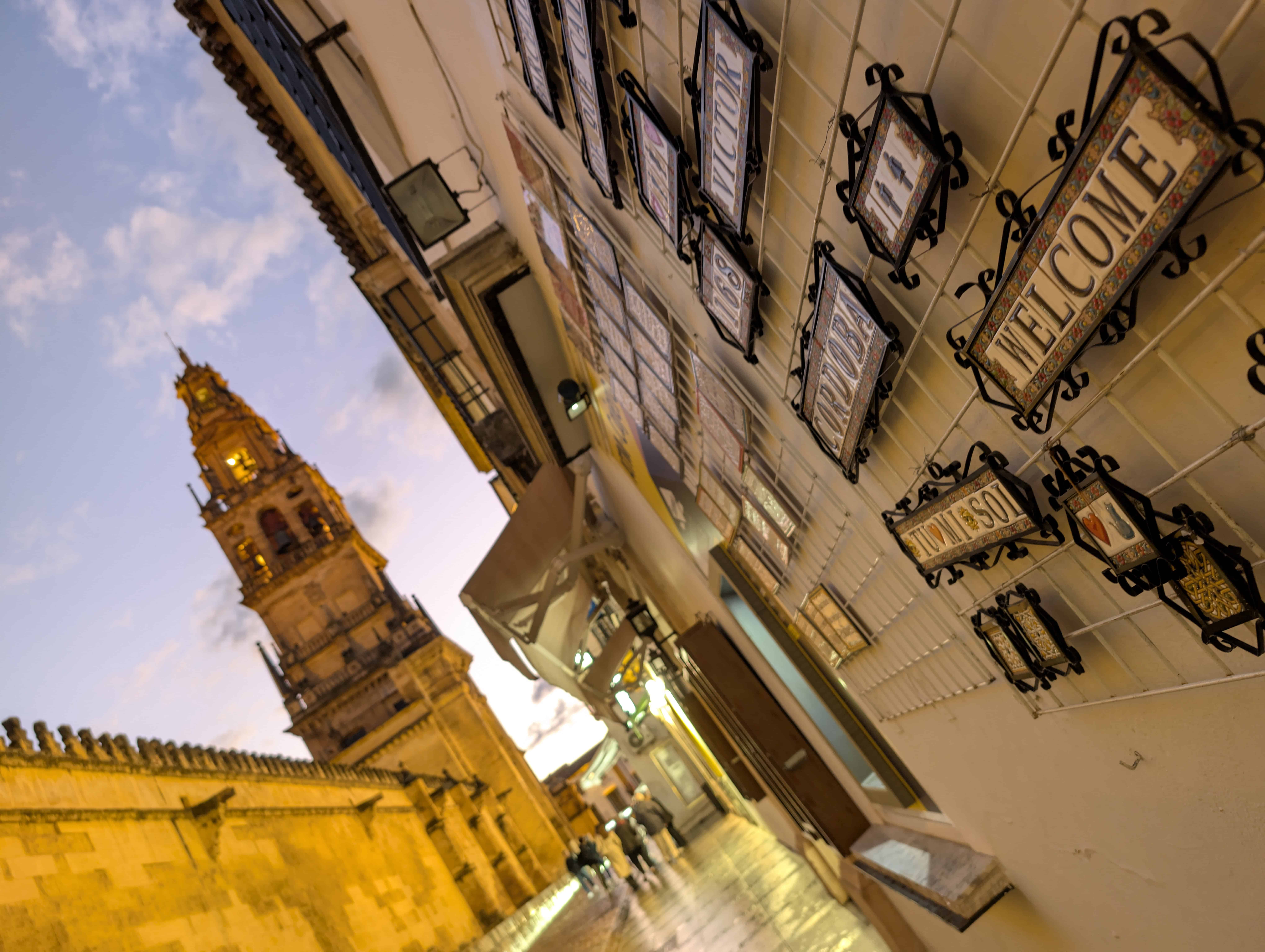
Alcazar de los Reyes Cristianos or the Alcazar of the Christian Monarchs
This imposing palatial fortress forms the western edge of the Cordoba old town, and was built after the Spanish King Alfonso XI of Castile in the 1300s. The palace consists of large, ornate gardens and orchards that have existed at the site from the 10th century. The gardens today were the result of remodeling in the mid 20th century, and have many palm, cypress, lemon trees along with decorative fountains and ponds.
The fort itself is contained within 4 towers and consists of a main hall and two courtyards. The main hall and courtyards are impressive but in my opinion, the gardens are the best section to visit or spend a day around.
There are two types of tickets to access this site – a general admission ticket to the fortress and the gardens for €5/adult and an additional fee to access the baths in the fortress for €3.11.
You can also opt for guided tours of the palace complex.
Patio Cordobeses or Cordoban Patios
A striking feature of Andalusia and especially Cordoba are its bright, floral and exquisite patios. Many Airbnbs in old town have a beautiful, Andalusian patio and you can see such patios all around the old town.
However, there is a neighborhood adjoining the old town with famous patios maintained within local homes. Most of these homes will allow you to check out their patios for free but some may ask for a donation on the way out. Take your time strolling through these lovely lanes and homes and stop for a beer or a coffee at one of the many alfresco cafes around the neighborhood.
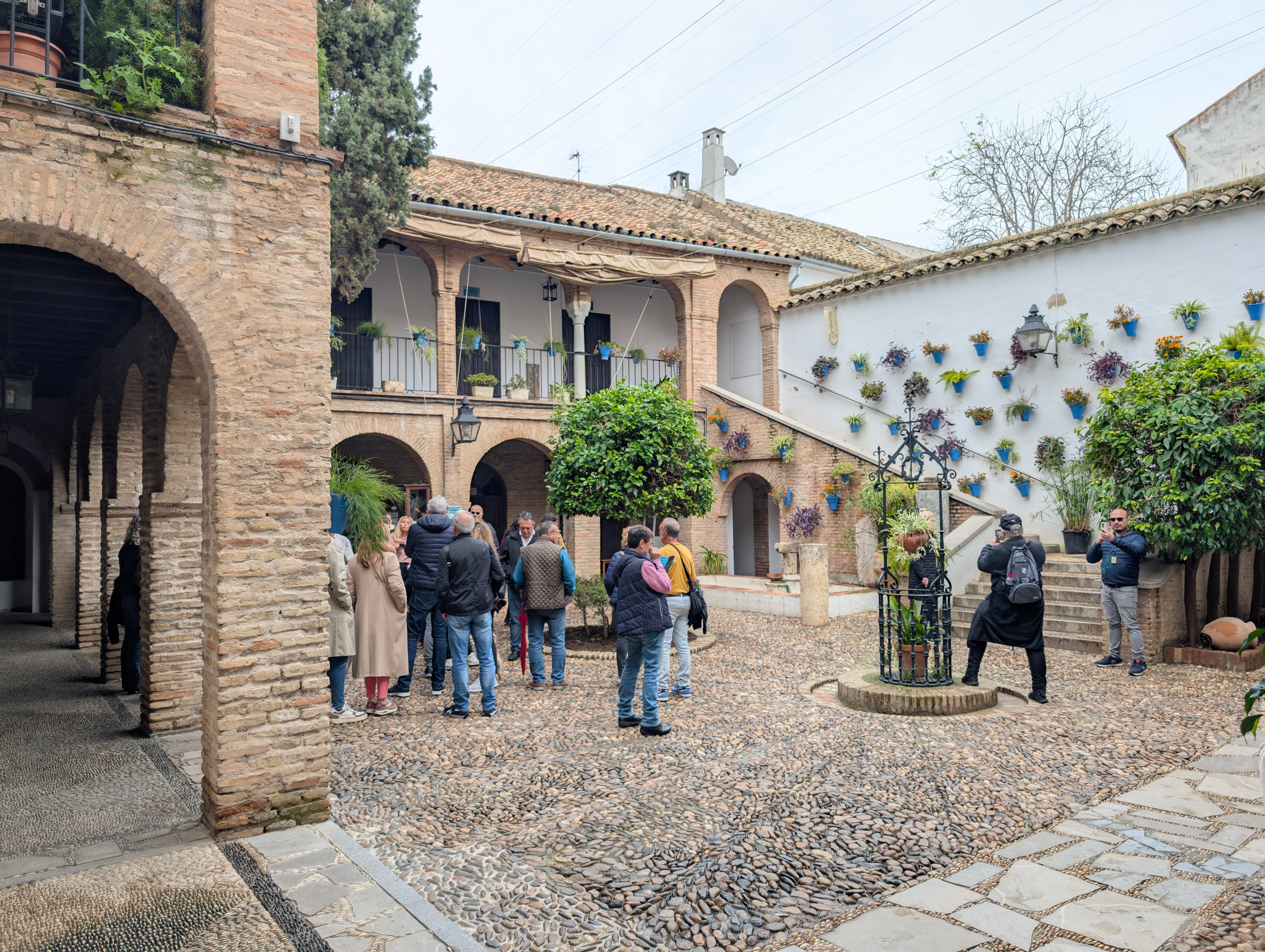
The Synagogue and Mosque within the Jewish Quarter
Cordoba has a well preserved Jewish quarter that has existed here from Moorish times, around the 8th century. The current Jewish quarter stretches from the Puerta de Almodovar on the northwestern edge of the old town to the Mosque-Cathedral complex. The Jewish quarter retains the layout of an urban Islamic medieval city.
The most strikingly beautiful landmarks are two tiny landmarks that are often missed in Cordoba – the Sinagoga de Cordoba and the Capilla Mudejer de San Bartalome. The synagogue, built in 1315, is free to enter and has an exquisitely preserved hall, courtyard and balconies. You can also visit the Case de Sefarad which is a meseum dedicated to Spanish-Jewish culture. The mosque, which you can enter for a €1.50 fee is a mosque-cathedral with intricate mosaic tile work.
The neighborhood’s alleys are also perfect to get lost in to admire the mix of Islamic and Christian influences that frames everything in the city and Andalusia, its buildings, food and history.
You can opt for a walking tour of the Jewish quarter to visit the synagogue, mosque and to learn all about Jewish Spanish history and this neighborhood.
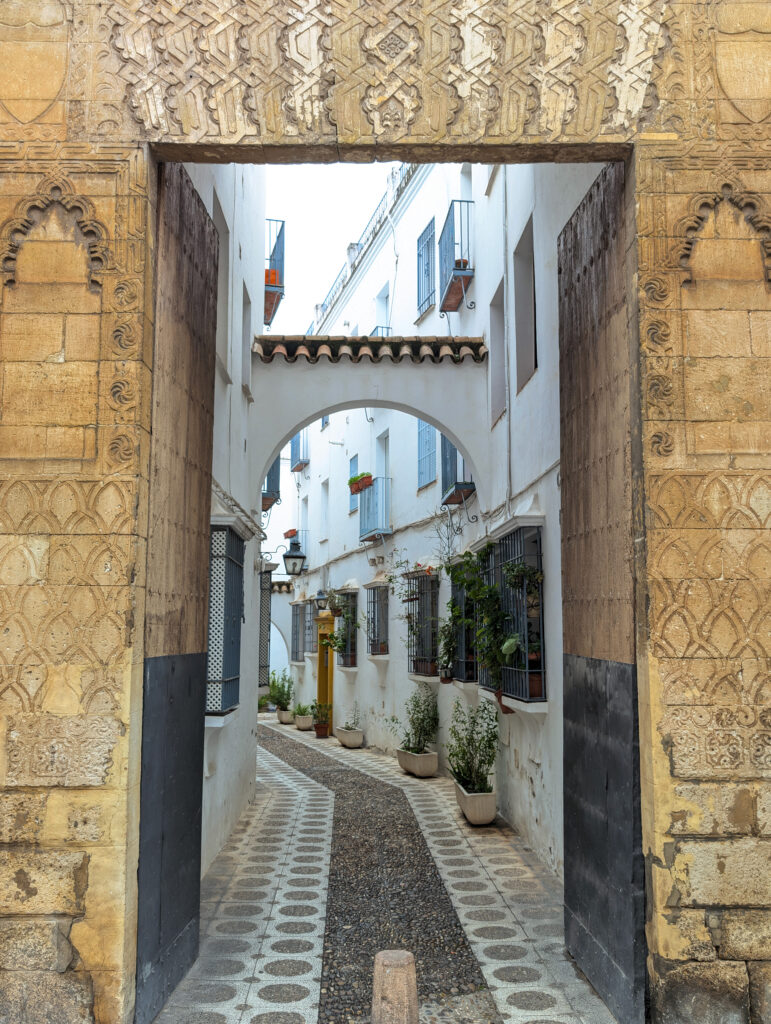
Eat local foods
Andalusian cuisine combines a mix of middle eastern (Moroccan) and Spanish flavors. While tapas are a favorite even in this region, some local bites include:
- Salmorejo: Like gazpacho but thicker/creamier, topped with jamón and boiled egg.
- Flamenquín: A crispy, deep-fried roll of ham and cheese.
- Berenjenas con miel: Fried eggplant with honey—sweet, savory, and addictive.
For authentic eats, head to Taberna Salinas or Bodegas Mezquita (which has a few locations). And try the local Montilla-Moriles wine!
Best areas for tapas: Around Plaza de las Tendillas and the streets near the Mezquita. But, as usual, the really good places are often a few blocks away from the main tourist spots.
One day in Cordoba Highlights Map
Our helpful Cordoba Highlights map guides you with the must visit historical sites, restaurant recommendations and helpful parking information. A pro parking tip is to park on street on the southern side of the river, near Torre de Calahorra on Av. Fray Albino. You should find free street parking here and along the parallel avenues.
If you have 3 or 5 days in Cordoba
If you are on a more leisurely trip through Andalusia, spend some time exploring the many landmarks within old town. Simply follow the red and white signs painted by the city which direct you to the many historical sites within old town. Some additional highlights from around old town include Palacio de Los Fernandez de Mesa, Iglesia de Santa Victoria, Iglesia de Santa Ana, the Roman temple, Plaza de la Corredera.
Medina Azahara
The Medina Azahara or ‘the radiant city’ was built by Abd ar-Rahman III, the ruler of Cordoba and Andalusia at the time. It has the ruins of a fortified city 4 miles from old town, at the Western edge of Cordoba. It served as the Capital of the Caliphate of Cordoba and the seat of its government. A UNESCO World Heritage Site, the city is an archeological site and the remains offer a window into what life would have been like during Moorish times in Spain.
If you would like a more detailed tour of the ruins, opt for a guided tour with a local archaeological guide.
Visit white villages of Cordoba or Ecija
Guadalcazar is a beautiful white painted village which Andalusia is so famous for. It is less than 30 minutes towards Seville and is a perfect pit stop for a quick stroll. If you are looking for a drive into the Sierra Morena mountains, check out the village of Villaviciosa de Córdoba. Other quaint villages in the area include Zuheros, Campiña Sur, Almodovar Del Rio and Iznajar.
You can also visit the well preserved medieval city of Ecija, where there are many options for a nice meal.
If you’re into nature, spend a day hiking in the Parque Natural Sierra de Hornachuelos in the Sierra Morena mountains
Finally, opt for relaxation in the hamams of Cordoba at Hammam Al-Andalus.
If you have more time, check out the beautiful clifftop town of Ronda which is only about 2 hours away down the road from Cordoba.
The Best Time To Visit Cordoba
Cordoba has a moderate climate throughout the year with the coldest month of January averaging between highs of 15C and lows of 4C (59F – 39F). The hottest months are June – August with average highs of 37C and lows of 17C (98F – 62F). The summer months also bring the highest tourist volumes in this area. So, accommodations are also relatively expensive during the summer.
Our recommendation would be to travel to Cordoba during the shoulder season – either the spring or fall. This will help you avoid the heat and the rush of tourists in summer.
If you can visit during the Patio Festival in May, do it! Local families open their flower-filled courtyards to the public. It’s stunning.
Where To Stay In Cordoba
Old town is the best for proximity to the main attractions and quaint ambiance.
📍Hotel NH Collection Amistad Córdoba
How To Get To Cordoba
🚆 TRAIN: Córdoba is well-connected by train. From Seville, it’s just a 45-minute ride on the high-speed AVE train, and from Madrid, it takes about 1 hour and 45 minutes. The train station is a 20-minute walk or a short taxi ride from the city center. Book train tickets in advance for cheaper fares.
🚗 CAR: The ideal way to discover Andalusia is by car. The freedom of movement a car allows will ensure you can cover many different gems spread across the vast Southern Spain region. Cordoba is well connected with
- Seville via the E-5 motorway. 142 kms or 1h40m driving time toll free.
- Madrid via the E-5 motorway. 395 kms or 4h 15m driving time with tolls
- Valencia via A-3 / A-4. ~550kms or 5h 15m driving time with tolls
Check our car rental deals from all the major airports around Cordoba here.
🚌 BUS: There are affordable bus options available from Seville and Valencia that get you to the near the old town in Cordoba.
TLDR: Is Cordoba Worth Visiting?
If you’re into medieval architecture, gorgeous European old towns and places where you can see a mix of many cultures, Cordoba should be a stop on your Andalusian itinerary. It is easy to get to from Seville and small enough to do in a day or large enough to spend 3 to 5 days here.

